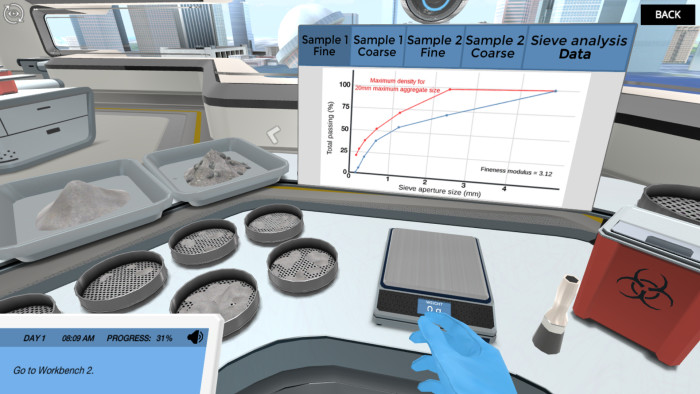
If you’re teaching a course in engineering, perhaps you’re looking for resources to help you introduce or reinforce fundamental engineering concepts that every student should know. According to a study by the American Society for Engineering Education, the use of virtual labs can significantly increase student engagement and understanding of engineering concepts.
There are many foundational concepts, but we’ve identified six common ones. We’ve also identified six Labster virtual labs that help you teach each concept. Not only can your students learn the concepts, but they can also have fun along the way by playing through a storyline.
Newton’s Laws of Motion are three basic laws explaining different aspects of motion. Multiple invisible forces act on an object at the same time. Some of the forces are easy to understand, as students can see them pushing or pulling an object. They can easily understand the source and direction of the exerted force. Many forces like gravity, friction, and upthrust forces are challenging to comprehend. This is where virtual labs come in!
In Labster’s virtual lab, Newton's Laws of Motion: Understand active and passive safety in motorsports, students will join a team of motorsport engineers and learn the basics of Newton’s laws of motion. They’ll understand the basic principles of passive and active safety while driving a high-class race car.

Chemical engineering, also known as wastewater/sewage treatment, removes contaminants from wastewater (sewage) before it enters aquifers or natural water sources such as rivers, ponds, marshes, and seas. Access to this process isn’t always possible, so students are left with abstract ideas on the topic.
In Labster’s virtual lab, Wastewater Treatment, students will learn the basics of how a wastewater treatment process works. They’ll work with the different specific steps of the treatment, such as denitrification, nitrification, and aeration, and prepare samples for GC-MS analysis to look for a targeted micropollutant.
Concrete materials are widely used for engineering in construction, but there are a ton of terms and concepts for students to learn, making it challenging to remember everything. Also, it’s not always possible to have concrete mixtures on-hand in classrooms.
In Labster’s virtual lab, Concrete Materials Testing: Learn the key properties of durable concrete, students will determine the particle size distribution of aggregates and mix them with cement, water, and admixtures to identify a recipe for a concrete with high workability. The compressive strength of this material will then be tested, and instructions will be given to the builders on how to avoid any future cracks forming in the walls.

Force occurs at the molecular level and a free-body diagram is a picture of all the external forces acting on the object. Both of these are abstract and not always the most exciting. We’ve created a virtual lab that teaches these concepts through learning to navigate a drone!
In Labster’s virtual lab, Forces and Free-body Diagrams: Learn how to navigate a drone, students will learn the basics of common forces as they experience them in their everyday life. You will visualize the reaction of an object in a given condition using the free-body diagrams.
Energy is a conserved quantity; it cannot be created or destroyed. As a result, the total amount of energy in the Universe is always the same. Yet, energy can pass from one system to another and change from one type of energy into another. This is another concept that can be challenging to teach. We’ve created a roller coaster simulation to help students understand!
In Labster’s virtual lab, Conservation of Energy: maximize the mechanical energy of a rollercoaster, students will learn how manipulating the mass, height, and velocity of a roller coaster affect its overall potential energy and kinetic energy. They’ll apply the concept of energy conservation to calculate the roller coaster's mechanical energy at different positions.

Silos are big constructions used typically for the storage of bulk solids. They’re complex structures with high construction and maintenance costs, making it challenging for students to gain hands-on experience.
In Labster’s virtual lab, Silo Design, students will learn how to design huge constructions called silos and perform soil mechanics tests to obtain the properties of powdered material. They’ll observe the flow of bulk solids inside a silo and understand the principle of a pneumatic conveying pump.

Labster helps universities and high schools enhance student success in STEM.
Request DemoRequest a demo to discover how Labster helps high schools and universities enhance student success.
Request Demo